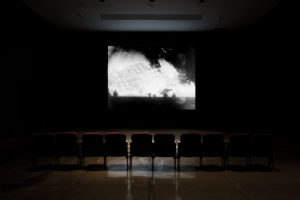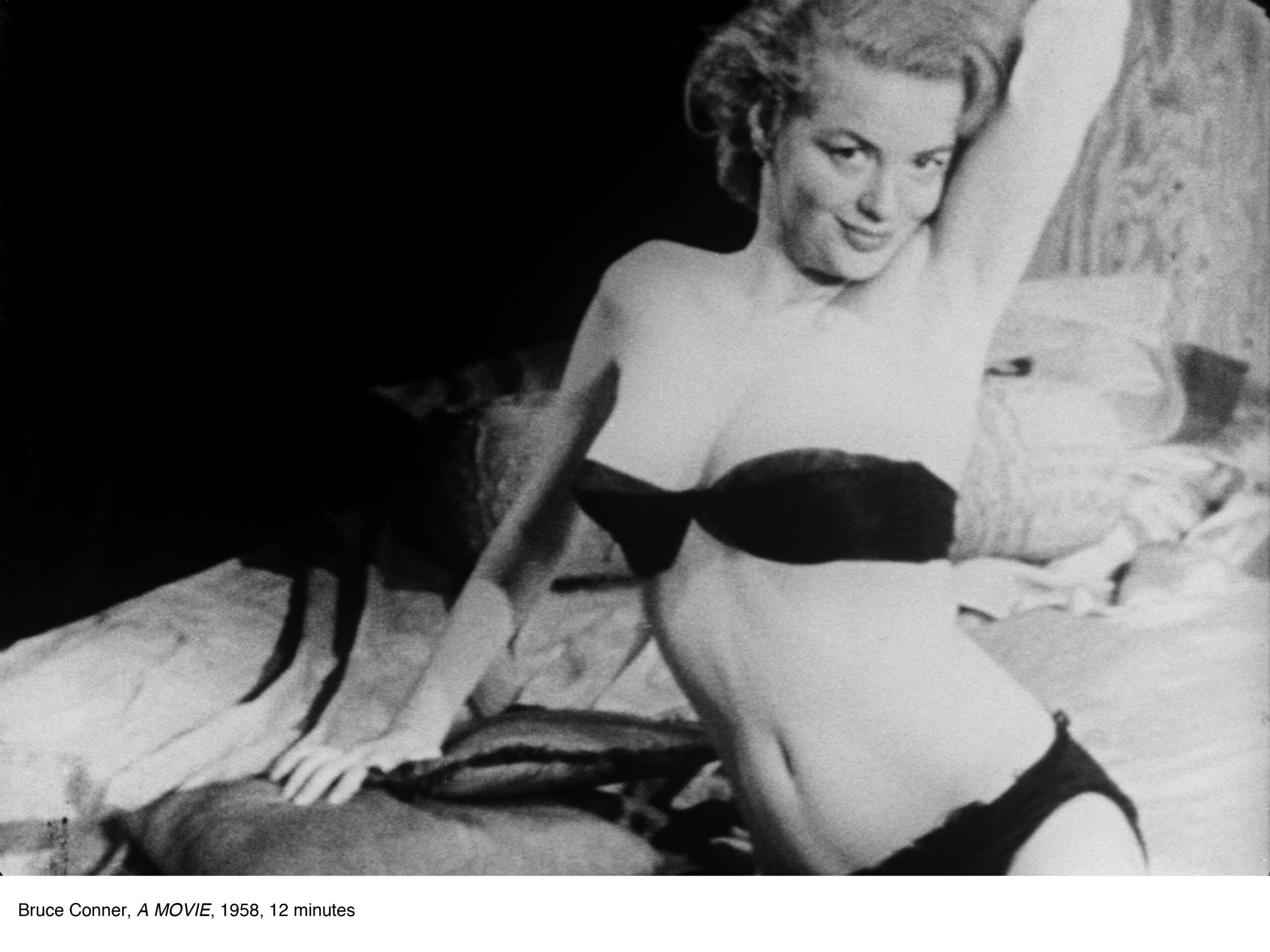In the darkened gallery, a single row of seats faces a large screen on which a series of images loop. These images run by in rapid succession with all of the characteristic flashes of light, scratches and stuttering of an acetate film. Transitions from one scene to another are made by jump cuts. There are no fades; just one scene after another, sometimes separated by large areas of dead space in which black predominates. Repeatedly, backwards countdowns of numbers and letters, all parts of the film leaders that are attached to the head or tail of a film to assist in threading a projector, as well as text announcing this is The End and large block letters spelling out A MOVIE BY BRUCE CONNER, appear. But it’s light years from the movies. Created in 1958, this 16mm, black-and-white (with sound) 12-minute film is made entirely of found footage. Scavenged from various sources and montaged together into filmic segues, A Movie is, in retrospect, a tour de force exploration of how media will interact with our consciousness of the world at large.

Bruce Conner, A MOVIE, 1958, courtesy of the Conner Family Trust and Kohn Gallery, Los Angeles, ©The Artist Rights Society.
Parachutes drop, skydivers descend, ships sink, and firing squads take aim, while the mushroom clouds of atomic bomb blasts billow out in slow motion. Elephants are hacked to pieces, people are shivering and crying, automobiles run off cliffs and flashes of white dots fill the screen. Countdowns continue; women undress. Wagons circle, cowboys and Indians race by on horseback, cavalry arrive, elephants stampede, cars race, spin out, crash, flip and burn. Locomotives surge, tanks arc over hills, blimps fly and crash in fiery conflagrations, a woman carefully unrolls her stockings. The End scrolls by again and again, dead space gives way to women carrying fruit piled high on their heads, surfers take to waves, waves overtake boats, motorcycles race in mud, a plane crash lands on water. There are aerial gunfights, bombs dropping and explosions. Amidst the onslaught of catastrophes, disasters and war, there are moments of grace. A man and woman spin carefully on a high wire over a city, schools of fish and scuba divers swim by and shafts of light reflect down through the water from above. Bruce Conner’s overall sequence however is dominated by violence. It savagely follows the news dictum of “If it bleeds, it leads,” even when the bleeding was only captured in black and white.
Conner’s groundbreaking film crystallized a new technique and mirrored the historical moment of its time. Even his use of sound—Ottorino Respighi’s “Pines of Rome”—marked another innovation. Conner would continue to use this union of sound and image in his films and lay the groundwork for future developments. Importantly, this composer’s tribute to scenes around Rome recalling the glory of the Roman Empire hailed from 1924, when the Mussolini government was evolving into a totalitarian regime and memories of Ancient Rome were exploited to support aggressive and nationalist policies. Bruce Conner shifts the terms of a viewer’s understanding of newsreel footage by using the loaded albeit wordless soundtrack to move against existing conventions.


